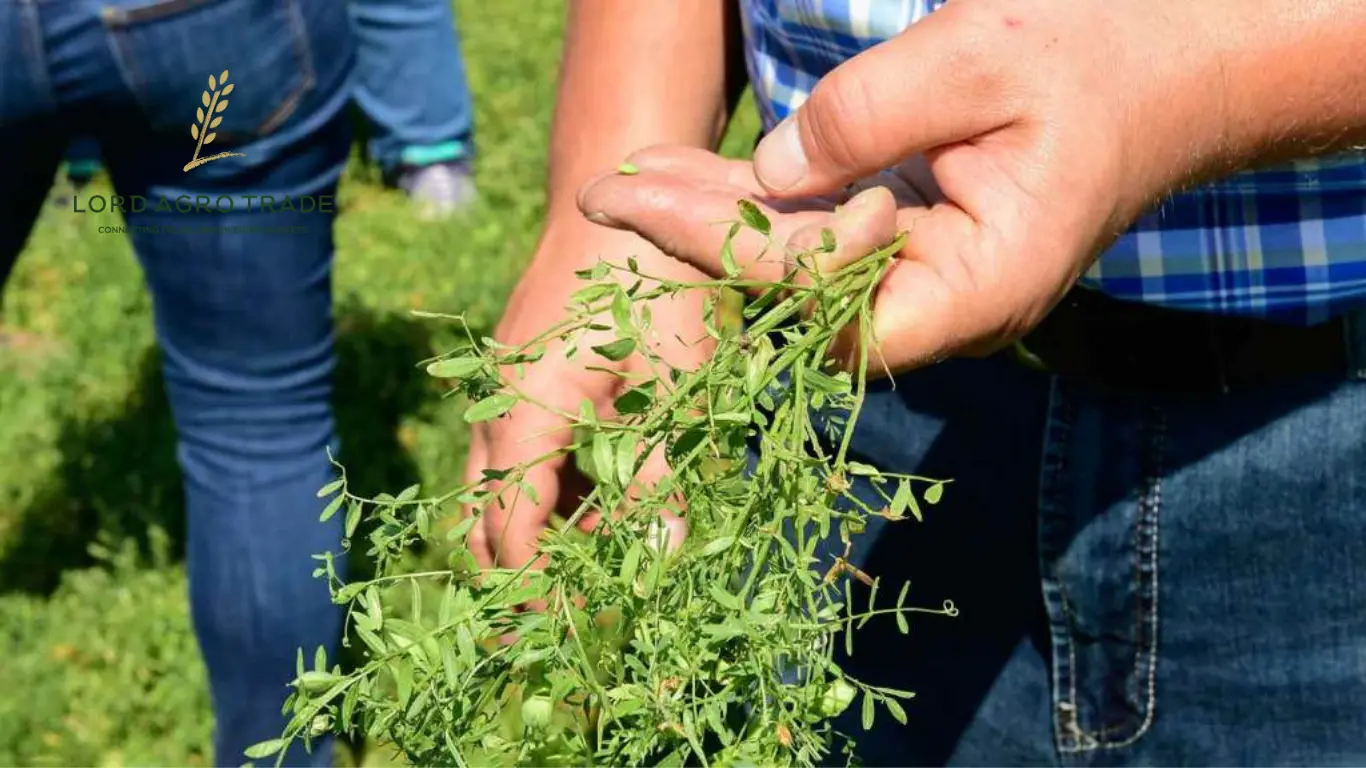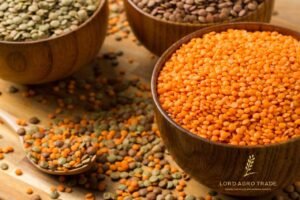Gulfood
17 To 21 FEB 2025 | DUBAI WORLD TRADE CENTRE
We’re excited to see you at Gulfood 2025!
Gulfood
17 To 21 FEB 2025 | DUBAI WORLD TRADE CENTRE
We’re excited to see you at Gulfood 2025!


Global lentil markets showed signs of stability in late September, with red lentils holding steady and only slight shifts across green lentil calibers. Importers noted that price offers from different origins are becoming similar, showing that exporters want prices to stay attractive for buyers. India has played a key role in recent trade activity, sharply increasing imports in July to over 28,000 MT, a sevenfold jump from the previous month, with Canada leading supplies.
Meanwhile, in North America, Statistics Canada lifted its harvest outlook to nearly 3 million MT, largely from higher green lentil output. As a result, the traditional price gap between green and red lentils has narrowed to less than $40/MT, a sharp contrast to last year’s much wider premium.

Canada: Canadian lentil exports in June reached only 41,200
MT, much lower than the 123,600 MT shipped in the same month last year. Still, total exports this season are slightly ahead at 1.02 million MT compared to 941,800 MT last year.
At the same time, Statistics Canada raised its harvest outlook from 2.65 million MT in August to almost 2.97 million MT in September. Most of this growth comes from green lentils, confirming Canada’s position as a key Canadian supplier for wholesale lentils at competitive lentils price levels.
United States: The U.S. is also expecting a strong lentil crop this year. Production is forecast at 516,000 MT, up 23% from last season. Farmers planted a record 1.07 million acres, with Montana leading the expansion. Yields are also higher, reaching a record 1,055 pounds per acre.
With these gains plus leftover stocks of about 80,000 MT, total U.S. supply will reach nearly 695,000 MT compared to 565,000 MT last year. This extra supply is adding more pressure on international lentils price trends.
Australia: According to ABARES (Australian Bureau of Agricultural and Resource Economics and Sciences), Australian pulses production could climb to 1.7 million MT, up from 1.27 million MT last year. The increase is mainly in red lentils, which means buyers will have more sourcing, keeping the market competitive.
Overall, pulses markets are still under pressure. As a result, price differences between green lentils and red lentils have narrowed. By mid-September, large green lentils were priced only $39/MT above red lentils, compared to a much wider gap of $357/MT last season.

Canadian chickpea exports in July reached 14,295 MT, down from 21,183 MT in June. Even with this slowdown, total exports for the season are 214,894 MT, about 14% higher than last year. The U.S. was the top buyer, followed by Pakistan and Israel.
On the production side, Statistics Canada increased its forecast from 309,000 MT in August to 331,000 MT in September, a 15% gain over last year. If yields stay strong, output could even approach 400,000 MT, keeping Canada an important wholesale supplier.
https://www.statpub.com/
The USDA expects U.S. chickpea production to reach 313,500 MT, up 32% from last year. Large-caliber chickpeas show the biggest jump, up 41% to 255,000 MT, while small calibers rose 9% to 83,000 MT.
Planted area grew 8% to 541,000 acres, with average yields of 1,418 pounds per acre. These higher volumes are increasing global supply and will influence wholesale chickpeas markets in the months ahead.
ABARES projects chickpea production at 2.1 million MT from 1.077 million hectares planted. This is slightly below last year’s 2.27 million MT, but if average yields return, the crop could still reach 1.88 million MT. Harvest has started in September and will move faster in October, keeping pressure on both chickpea price levels.
Global Chickpea Market Trend:
The global chickpea market has been fairly steady, though desi and smaller calibers are showing more weakness. Buyers are watching closely as the North American harvest continues and Australia’s crop comes in. With larger supplies available, prices are not moving much. However, Canada remains a reliable supplier for importers looking for consistent volumes.
Weather Report / Mid-September

Here’s a look at the main pulse-producing regions in September.
Canada: Small hailstorms continue to damage crops in Alberta, Manitoba, and Saskatchewan. Lentils and peas were affected, and harvest was slowed down by mixed dry and rainy conditions. Interestingly, some experts note that a later harvest could mean better crops compared to very early, dry years.
India: Heavy monsoon rains damaged pulses across Karnataka, Telangana, Rajasthan, Gujarat, and Maharashtra. Rajasthan had 73% more rain than normal, hurting Mung Beans and Black Matpe. Telangana lost around 6,750 acres of pulses, while Karnataka saw over 520,000 hectares impacted, including some pulses fields.
Australia: Rainfall was very mixed. Southern New South Wales got 10–50 mm of rain, improving soil moisture, while other regions like Western Australia, South Australia, and northern Victoria stayed mostly dry. More rain is expected in NSW, Queensland, and southern Victoria.
United States: Early September frost caused significant losses to dry beans in North Dakota, with damages estimated in the tens of thousands of dollars.
https://globalpulses.com/